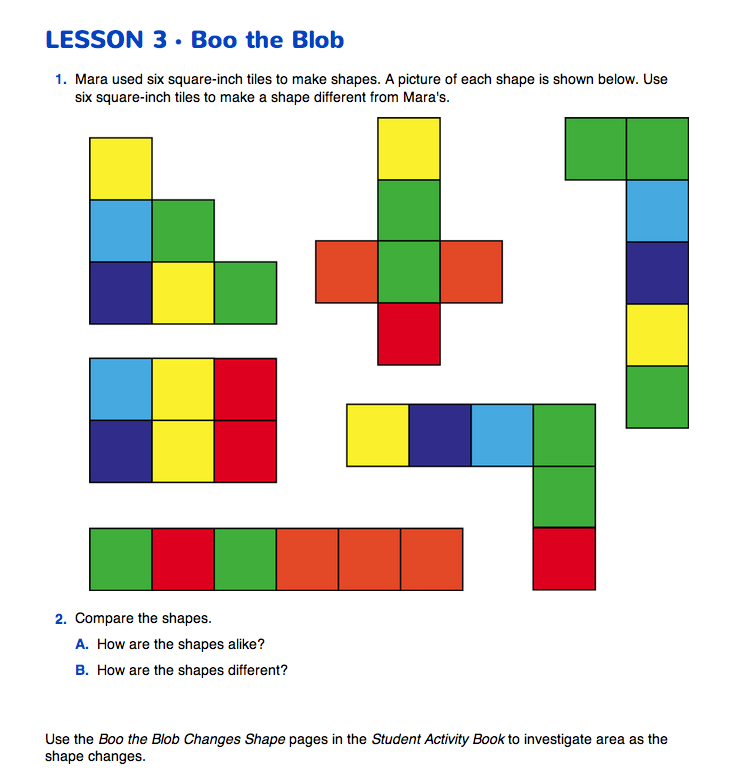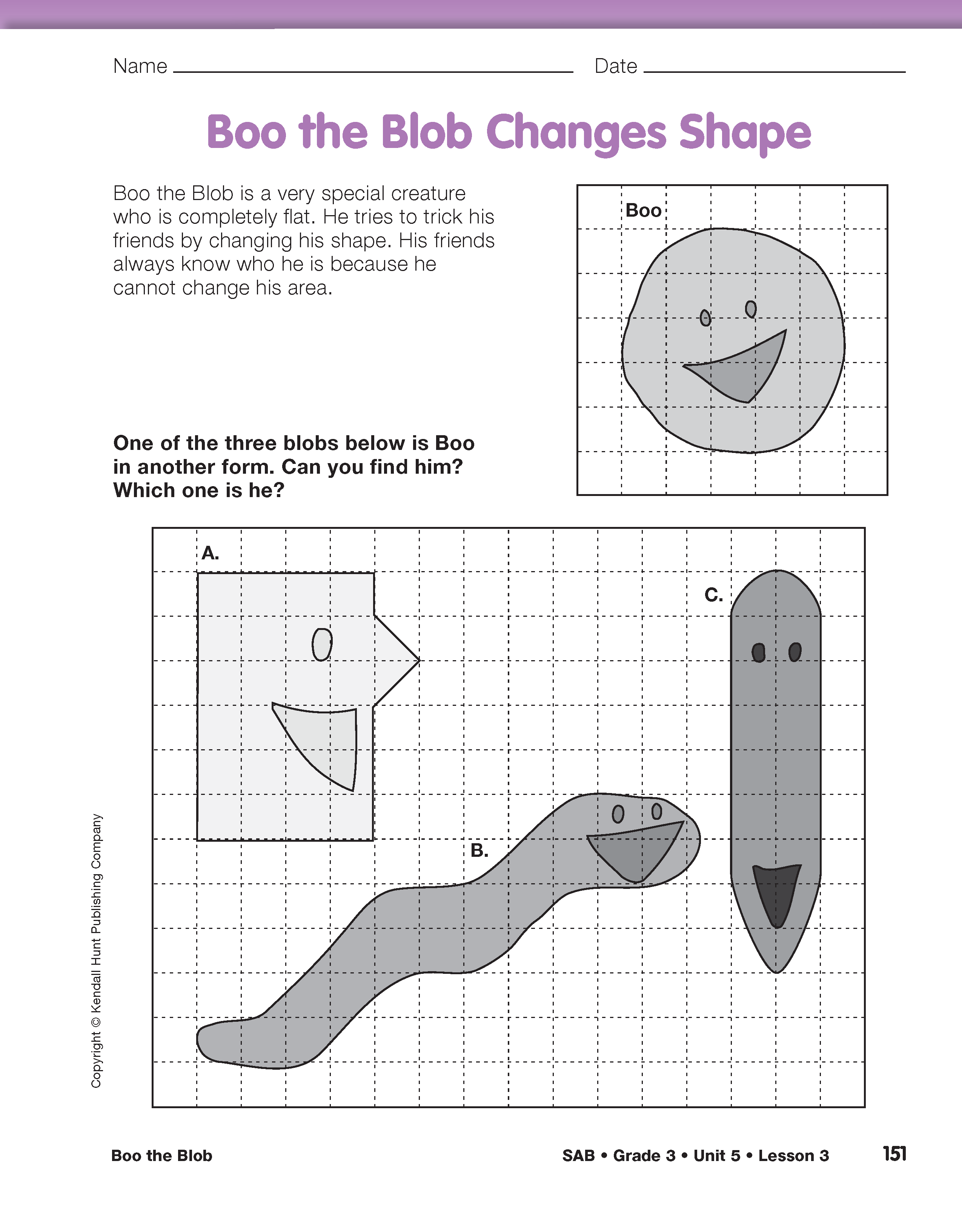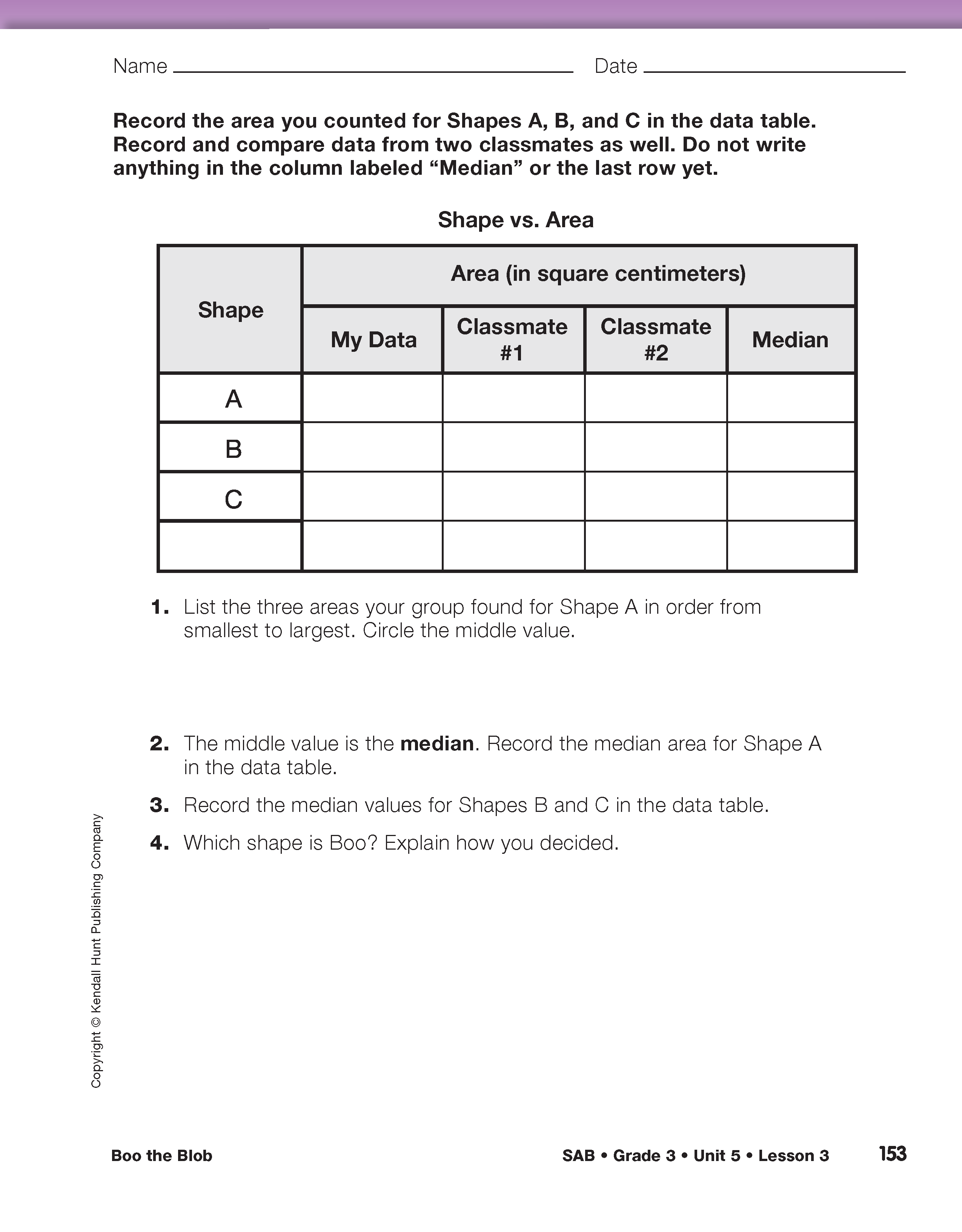Boo the Blob
Est. Class Sessions: 1Developing the Lesson
Compare the Shapes Made with Six Tiles. Give each student six square-inch tiles and refer them to the Boo the Blob page in the Student Guide. Introduce the context by reading Question 1 and by displaying the shapes Mara made with the six square-inch tiles. Give students a few minutes to make a shape with the six square-inch tiles and then ask students to discuss Question 2 with a partner. Add student-created shapes to the shapes already displayed and work with students to write a class response to Question 2. Students should notice that the area is always the same even though the shapes are different. Some students may notice that the distance around each shape (perimeter) is different but that observation is beyond the expectations of this lesson.
Find the Area of Boo the Blob. Challenge students to find the area of Boo the Blob in square centimeters on the Boo the Blob Changes Shape pages in the Student Activity Book. Allow them to use any method but emphasize the need for accuracy. One method is for students to count square centimeters as they did in the previous lesson. They should find the area for the entire blob, including its mouth and eyes.
Compare students' results for the area of the shape labeled “Boo.” List all the answers from smallest to largest on a display. Record each student's measurement, including duplicates. They should cluster around 20 square centimeters—the approximate area of the shape. Most answers will probably fall between 19 and 21 square centimeters. Since this method for finding the area of curved shapes does not give exact answers, expect some measurement error in the results. Let students give reasons for the different numbers.
Here are some sample questions to guide discussion:
Explain that we should expect to get results that differ a little bit. Scientists address this by making multiple trials when they do an experiment. They then deter- mine representative—or average—values for the data. Since there are different measurements for the shape, the class needs to decide on a good representative value. Have students share their ideas on how to agree on one representative measurement for Boo the Blob.
Tell students that the middle measurement is a good representative value. Remind them that the class's measurements have been collected and recorded in order from smallest to largest. Demonstrate how to find the median or the middle measurement. See the TIMS Tip for strategies to collect and find the median of the students' measurements. If the list has an even number of measurements, two will be in the middle of the data. The median is the value halfway between these two numbers. For example, if the two values are 19 square centimeters and 20 square centimeters, the median is 191/2 square centimeters.
Find the Area of the Mystery Blobs. Once students have agreed on Boo's approximate area, the class can form groups of three to measure the mystery blobs in search of the disguised Boo. Encourage students to count square centimeters as accurately as possible so they will be able to identify Boo correctly.
Have each student record his or her own measurements for the area of Shapes A, B, and C in the Shape vs. Area data table on the Boo the Blob Changes Shape pages.
Ask groups to discuss the following:
Demonstrate Finding the Median Area. Ask group members to share their data and record it on their data tables. Then ask one group to share their data for Shape A as asked in Question 1. List the three measurements from smallest to largest on the board.
Ask:
Ask the remaining groups to discuss and answer Questions 1 and 2 with their group members. Circulate among the students to verify that students are identifying the median appropriately. Once students are confident with finding the median, have them repeat this procedure to find the median area of the other shapes and record it in the table as directed in Question 3. The last row in the table will be completed later in the lesson (Question 6). Discuss and share the median area of each shape.
Blob A has an area of 25 square centimeters; Blob C has an area of approximately 16–17 square centimeters; Blob B, which has an area of approximately 20 square centimeters, is Boo.
Decide Which Shape Is Boo. Direct small groups to decide which shape is Boo (Question 4). Before students start writing their explanation, refer students to and display the Math Practices page in the Student Guide Reference section. Focus their attention on Math Practices Expectation 5, Show my work.
Make a list of student responses after you ask:
Focus attention on Math Practices Expectation 6, Use labels.
Ask:
Give students a chance to write their own explanation to Question 4. Circulate among the students and look for student work samples to share with the class.
Display each student work sample and use the following questions to help provide feedback and discuss expectations:


















